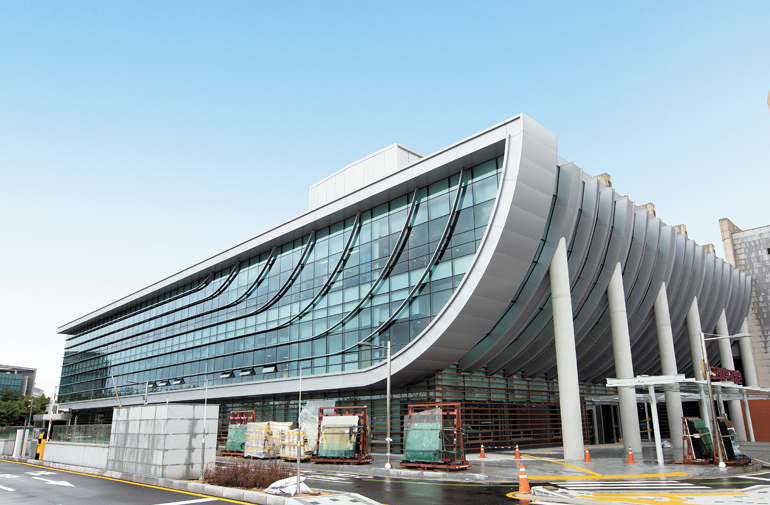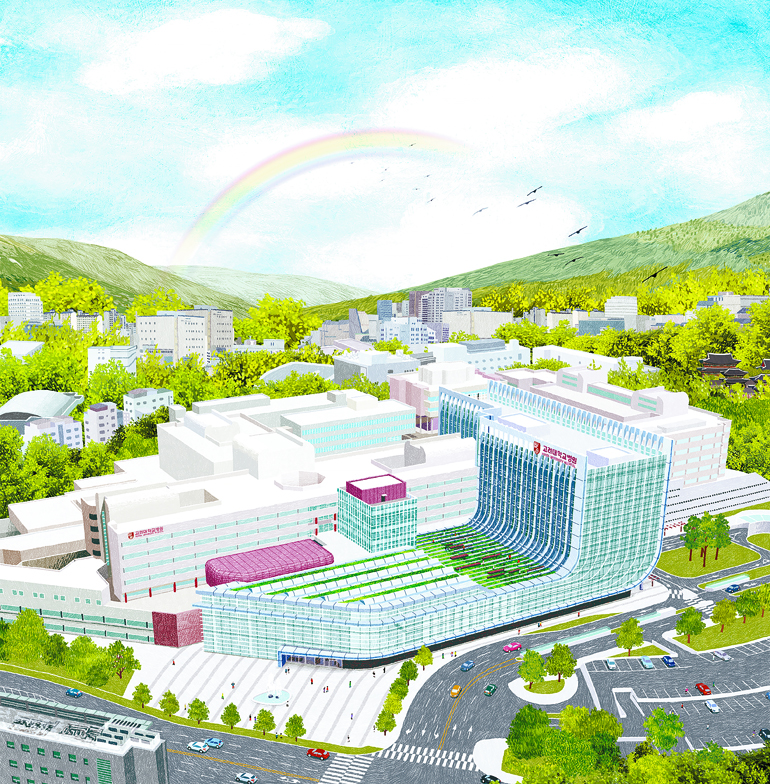
Latest News
- Hyundai E&C Signs PPA for Solar Renewables with Glennmont D&D Solar Holdings
- Hyundai E&C to Embark on UK SMR Project forging Korea-US-UK Technology Alliance
- Hyundai E&C Consolidates Leading Position in Concrete Safety and Quality Technology
- Hyundai E&C Selected as Preferred Bidder for Large Nuclear Power Plant in Bulgaria
- Hyundai E&C Attains “Leadership A” in CDP's Climate Change Assessment
[Our Project] Hyundai E&C establishes a foothold for future medical science

Hyundai E&C has been in charge of the construction of the Korea University Convergence Medical Center which is expected to increase the level of medical services provided by Anam Hospital of Korea University Medicine. Korea’s primary builder joined hands with the Korea’s leading multispecialty public health facility in three decades after the completion of the construction of its main building in 1991. Phase 1-1 of the Korea University Convergence Medical Center project is to build a medical building of seven floors above ground and six basement levels. The project includes the construction of a lobby, a space for outpatient care, a staff cafeteria, a maintenance room and a parking area. The construction of Phase 1-1 commenced in September 2017 and was completed in July 2020.
The construction site of the Korea University Convergence Medical Center project took a different approach as they had to secure a passage linked to the main building, together with the construction of a new hospital building. Because a boundary between space for medical treatment and the construction site is blurred, they had no choice but to be more cautious about safety of hospital visitors and management of complaints and gave a top priority to “no discomfort for patients and visitors.”
Nonetheless, the construction process was a daunting challenge from its first stage: The construction site had to remove a rocky hill as high as a sevenstory building. They sought ways to blast it in a stable way since the demolition took place close to the patient wards. To deal with this problem, they worked on the blasting operation with a limited amount of explosives weighing 300 kilograms only for two hours, which enabled them to predict construction safety outcomes. Moreover, they measured noise level simultaneously with the blasting in order to respond to patients’ complaints in real time.
The construction site conducted blasting work and frame construction at the same time. To ensure safety and economic feasibility, a method of top down construction was applied. Basement construction took place with the ground being covered, which could minimize noise and dust and secure an enough space for construction. As top-down construction method might lead to interferences among different types of construction, however, the construction site put multifaceted efforts into conducting the project without disruptions by effectively establishing zoning districts and providing a meeting room with a better access.


